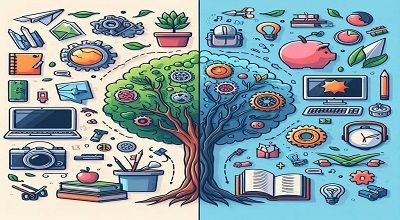Multimodal Learning Vs. Learning Styles
Multimodal learning vs. learning styles are two distinct concepts related to education and cognitive processes, but they address different aspects of how individuals learn. Let’s explore each term and highlight the key differences:
Multimodal Learning:
- Definition: Multimodal learning refers to the use of multiple sensory modalities (such as visual, auditory, kinesthetic, and tactile) to process and understand information.
- Characteristics: In multimodal learning, individuals engage with content using a combination of different senses. For example, a lesson may include visuals like diagrams or charts, auditory elements such as lectures or discussions, and hands-on activities for a kinesthetic experience.
- Purpose: The goal of multimodal learning is to cater to diverse learning preferences and enhance comprehension by providing information in various formats.
Learning Styles:
- Definition: Learning styles are theoretical frameworks that attempt to describe an individual’s preferred way of learning. These preferences can include visual, auditory, kinesthetic, reading/writing, and multimodal styles.
- Characteristics: Learning styles theory suggests that individuals have unique preferences for how they receive and process information. Some people may learn best through visual aids, while others may prefer listening to explanations, and some may benefit more from hands-on activities.
- Purpose: The concept of learning styles is often used to tailor educational approaches to match individual preferences, optimizing the learning experience for each student.
Key Differences:
Scope:
- Multimodal Learning: Focuses on the use of multiple sensory modalities to present information.
- Learning Styles: Focuses on identifying an individual’s preferred mode of learning among various options.
Application:
- Multimodal Learning: Describes the presentation of information in different formats to enhance overall understanding.
- Learning Styles: Describes an individual’s preferred way of processing and assimilating information.
Flexibility:
- Multimodal Learning: Emphasizes adaptability in presenting information through various modalities.
- Learning Styles: Identifies a relatively stable preference in how an individual prefers to learn.
Final Words
Multimodal Learning Vs. Learning Styles: It’s important to note that while multimodal learning acknowledges the benefits of catering to various senses, the concept of learning styles has faced criticism for lacking strong empirical evidence supporting its validity. Some educational researchers argue that focusing on individual preferences might not be as effective as employing evidence-based teaching strategies that benefit a broader range of learners.
